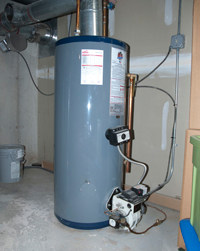The publisher is making a few good points on Water Heater Maintenance Tips You Can't Afford to Forget in general in this content underneath.

Hot water is crucial for daily comfort, whether it's for a revitalizing shower or cleaning meals. To guarantee your warm water system runs effectively and lasts longer, regular upkeep is essential. This short article offers practical ideas and insights on just how to preserve your home's hot water system to stay clear of interruptions and expensive repair work.
Introduction
Preserving your home's warm water system may seem daunting, however with a few simple steps, you can ensure it operates efficiently for several years to find. This guide covers everything from comprehending your hot water system to DIY upkeep ideas and understanding when to hire specialist assistance.
Significance of Maintaining Your Warm Water System
Routine upkeep not only prolongs the life expectancy of your warm water system yet additionally ensures it operates efficiently. Overlooking upkeep can cause lowered performance, higher energy costs, and even premature failure of the system.
Signs Your Hot Water System Requirements Upkeep
Recognizing when your warm water system needs attention can avoid significant problems. Keep an eye out for indicators such as irregular water temperature, weird sounds from the heater, or rusty water.
Understanding Your Warm Water System
Prior to diving right into upkeep jobs, it's handy to understand the basic components of your hot water system. Generally, this consists of the hot water heater itself, pipelines, anode poles, and temperature level controls.
Monthly Upkeep Tasks
Routine regular monthly checks can assist capture small issues prior to they escalate.
Purging the Water Heater
Purging your water heater gets rid of sediment buildup, boosting efficiency and lengthening its life.
Monitoring and Replacing Anode Rods
Anode poles avoid deterioration inside the tank. Examining and changing them when broken is essential.
Checking and Changing Temperature Level Setups
Adjusting the temperature setups ensures optimal efficiency and safety and security.
Do It Yourself Tips for Upkeep
You can execute several maintenance tasks on your own to keep your hot water system in leading problem.
Looking for Leaks
Frequently examine pipes and links for leakages, as these can bring about water damages and greater bills.
Testing Stress Alleviation Valves
Testing the pressure relief valve ensures it functions appropriately and stops extreme stress build-up.
Protecting Pipes
Shielding warm water pipes lowers warm loss and can save power.
When to Call an Expert
While do it yourself maintenance is beneficial, some concerns need professional experience.
Complex Concerns Needing Expert Help
Instances include significant leaks, electrical issues, or if your water heater is continually underperforming.
Routine Expert Upkeep Perks
Professional upkeep can include detailed assessments, tune-ups, and ensuring conformity with safety standards.
Verdict
Regular upkeep of your home's hot water system is crucial for efficiency, durability, and cost savings. By adhering to these pointers and understanding when to look for expert aid, you can guarantee a trusted supply of hot water without unanticipated disruptions.
How to Maintain an Instant Hot Water Heater
Before tinkering with your hot water heater, make sure that it’s not powered on. You also have to turn off the main circuit breaker and shut off the main gas line to prevent accidents. Also turn off the water valves connected to your unit to prevent water from flowing into and out of the appliance. 2. When you’re done, you have to detach the purge valves’ caps. These look like the letter “T” and are situated on either side of the water valves. Doing so will release any pressure that has accumulated inside the valves while at the same time avoid hot water from shooting out and burning your skin. 3. When the purge valves’ caps are removed, you have to connect your hosing lines to the valves. Your unit should have come with three hoses but if it didn’t, you can purchase these things from any hardware or home repair shops. You can also get them from retail stores that sell water heating systems. Read the user’s manual and follow it to complete this task properly. When the hosing lines are connected, open the purge port’s valves. 4. You should never use harsh chemical cleaners or solutions when cleaning your unit. Make use of white vinegar instead. It should be undiluted and you’ll probably use about 2 gallons. 5. Now flush your water heater. This task should probably take about 40 minutes. We can’t give you specific directions for this because the procedure is carried out depending on the type, model and brand of your heater. With that being said, refer to the user’s manual. 6. When you’re done draining the unit, you have to turn off the purge port valves again. Remove the hosing lines that you earlier installed on each of the water valves. Put the valve caps (purge port) back in their respective places and be very careful so as not to damage the rubber discs that are found inside these caps. 7. Now that everything’s back in place, check your user’s manual again to find out how to reactivate your water heating system. 8. Once it is working, turn one of your hot water faucets on just to let air pass through the heater’s water supply pipes. Leave the tap on until water flows smoothly out of it. https://www.orrplumbing.com/blog/2014/september/how-to-maintain-an-instant-hot-water-heater/
Do you like more info about What Kind of Maintenance Do Water Heaters Need?? Try to leave feedback below. We'd be delighted to find out your opinion about this blog post. We hope to see you back again before long. Are you aware of somebody who is inquisitive about the subject? Be sure share it. I praise you for being here. Kindly pay a visit to our blog back soon.
Request An Appointment